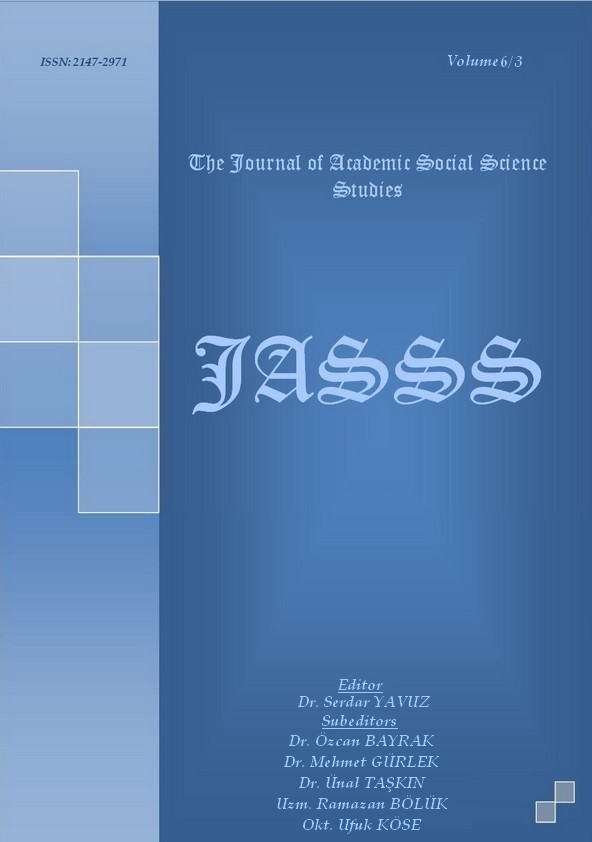Author :
Abstract
Cam tüm toplumlarda duygu, düşünce ve toplumsal değerlerin bir anlatım aracı olmuş ve zamanla ait oldukları toplumun kültürel değerleri hakkında fikir verebilecek türde simgesel ürün haline gelmiştir. Türk camcılık sanatının hangi yıllarda nasıl bir gelişim içinde bulunduğu ayrıntılı olarak kesin kayıtlarıyla ve tarihsel belgeleriyle bilinememektedir. Ancak, yakın çağlara ait kısmen belgelenebilen cam eserleri bilebiliyoruz. Geleneksel Tür camcılığı dendiğinde akla gelen sınırlı sayıda eser olduğu görülmekte ve bu eserler Osmanlı kültür ve sanatının birer simgesi olarak üretildiği dönemin özelliklerini yansıtabilmektedirler. Geleneksel Türk cam sanatı genel olarak Selçuklu ve Osmanlı dönemleri olarak ele alınmaktadır. Selçuklu’ların doğudan Anadolu’ya göç ettikleri dönemden günümüze ulaşan bazı cam ürünlerin varlığı bilinmektedir. Anadolu Selçukluları kültürel anlamda oldukça zengin ve anlam yüklü figüratif uygulamaları sanat ve zenaat ortamında sıklıkla kullanmışlardır. Osmanlı cam sanıtı Selçuklu’ların etkisi altında gelişmiştir. Osmanlı camcılığı kökenlerini Selçuklu camcılığından almakla beraber zaman içinde kendine özgü bir yapıya kavuşmuştur. Cam ürünlerindeki biçimsel özelikleriyle Osmanlı’lar kendi üslubunu oluşturarak simgesel ürünler üretmişlerdir. Osmanlı dönemine ait bazı minyatürler Osmanlı’nın cam’a verdiği önemi yansıtmakta ve Türk cam sanatının gelişimi hakkında bilgi vermektedirler. Türk camcılık tarihinin en önemli izlerini taşıyan Beykoz işi Çeşm-i Bülbüller biçim, form ve üzerlerine işlenmiş desenler olarak incelendiğinde geleneksel Osmanlı biçimlerinde yapılmış ve Osmanlı üslubuna göre bezenmiş oldukları görülmektedir. Çeşm-i Bülbül olarak adlandırılan bu filigranlı camlar Osmanlı beğenisini ve sanat anlayışını gösteren simgesel örnekler olarak değerlendirilebilir. 19. Yüzyıl, bütün dünyada, genel olarak cam sanayiinin çok köklü değişimler yaşadığı bir dönemdir. Bu dönemin en önemli özelliği, geleneksel cam üretiminin çok büyük bir hızla sanayileşmeye dönüşmesidir. Cumhuriyet’le birlikte, Türk camcılığı düzene sokulmuştur. İstanbul’da Paşabahçe’nin dik bir yamacı önündeki alana 1934’te Vekiller Heyeti kararıyla ilk Cam Fabrikası kurulmuştur. Bu araştırmada camın genel tarihine kısaca değinilerek biçimleriyle başlıbaşına sembolik anlam taşıyan geleneksel Türk cam sanatının tarihsel süreç içindeki gelişimi ele alınmış ve konuyla ilgili Osmanlı dönemine ait bazı minyatürler incelenerek geleneksel Türk cam sanatı hakkında değ
Keywords
Abstract
Glass has been a means to express feelings, thoughts and values in every society and in the course of time has become a symbolic product that can give an idea about the cultural values of the society it belongs to. We do not have exact records and historical documents to give us a detailed information about the development of the Turkish art of glass-making by years. However, we know about the recent works of glass which can partly be documented. When we think about the traditional Turkish glass-making, we can see that there is a limited numbers of works and these works reflect the characteristics of the period they were produced in as a symbol of Ottoman culture and art. Traditional Turkish art of glass-making is addressed as the periods of Seljukian and Ottoman in general. Some glass works are known to exist that have reached the present day from the time Seljukians migrated to Anatolia from the east. Anatolian Seljukians used culturally rich and meaningful figurative technics in art and handicraft. Ottoman art of glass-making developed under the influence of Seljukians. Although the origins of Ottoman glass-making come from Seljukians, in the course of time it became unique. With their stylistic characteristics in glass products, Ottomans developed their own style and created figurative works. Some miniatures from Ottoman period reflect the importance Ottomans placed on glass and give us information about the development of Turkish art of glass-making. When Beykoz “Çeşm-i Bülbül” which carries the most important marks of Turkish glass-making history is analyzed in terms of style, form and figures, it can be seen that it is made in accordance with traditional Ottoman style. These water marked glasses which are called “Çeşm-i Bülbül” can be considered as figurative examples which show the Ottoman taste and sense of art. 19th century is a period during which radical changes took place in glass industry throughout the world. The most important characteristic of this period is the fast industrialization of traditional glass-making. Following the declaration of Republic, Turkish glass-making was regulated. The first factory of glass was established to the area in front of a steep slope in Paşabahçe, İstanbul in 1934 upon the decision of the assembly of the members of the parliament. This research reviews the general history of glass and addresses the historical development of traditional Turkish art of glass-making and makes some evaluations a





